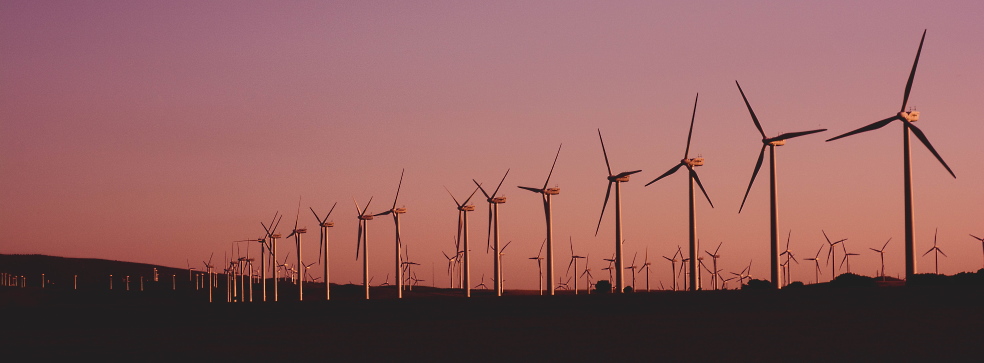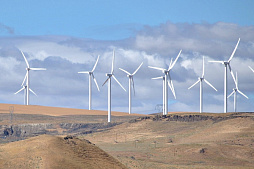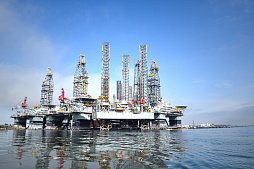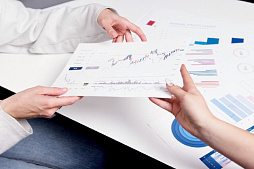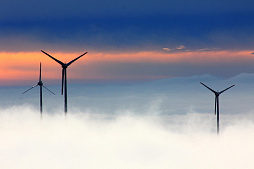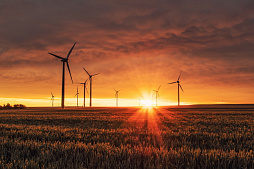To consider an application for financing, fill out the form and send it to us by e-mail along with the project brief, or contact our experts
The construction and modernization of wind farms allows obtaining green energy, ensuring energy independence of the business and preserving priceless reserves of coal, oil and natural gas for future generations.
Investments in the construction of every 10 MW of installed capacity of wind farms create about 40 direct jobs in the first year of investment.
Maintenance of existing 10 MW wind farms is associated with the preservation of 2 direct jobs and 3 indirect jobs.
Wind power for local communities means not only jobs, but also additional tax revenues plus the expansion of local energy infrastructure and the road network.
The international company Costex Corporation DBA offers a full range of services in the financing, construction and modernization of wind farms anywhere in the world.
We serve private clients, businesses, government-owned enterprises and agencies.
Find out more by contacting our representatives today.
Wind power plant modernization
Wind assets in most European countries are relatively young.The first large wind farms were commissioned in the 2000s, and a significant increase in installed capacity occurred only in the previous decade.
Most wind farms should reach the end of their planned life in the late 2020s and early 2030s. The owners and operators of these assets will have to decide whether to dismantle the wind farm or extend its service life by modernizing and installing new wind generators.
Most wind turbines on the market today are certified for 20 years of operation, which is a direct result of the introduction of new standards and technologies.
The turbine elements are designed so that they can work without destruction and serious malfunctions during the entire service life.
Under actual operating conditions, the loads are usually small.

Therefore, in many cases, a certain margin of safety of the structure is preserved, and the actual period of safe operation of the wind generator can be longer than that declared by the manufacturer.
However, after the expiration of the declared period, the structural safety of the components should be checked and reviewed in accordance with national building codes and rules for industrial plants. Below we have given the standard actions that the owner or operator of a wind farm can take at the end of the equipment’s life.
Complete modernization
With a complete modernization of the wind power plant, old wind generators are dismantled, and new ones are installed in the same platforms. Energy infrastructure, power connection points and access routes to wind turbines are generally maintained unchanged.Complete modernization is subject to the same restrictions as the newly developed wind energy project, requiring similar legal and administrative measures.
In this case, more technological devices are installed with much greater efficiency, greater power and dimensions. An increase in the power of the wind turbine unit while maintaining the capacity of the power plant helps to reduce the number of turbines on the site.
For example, a 20 MW wind farm, consisting of 10 wind turbines with a capacity of 2 MW, can be upgraded using currently available 4 MW turbines. Accordingly, only 5 turbines will remain.
On the other hand, the installed capacity of a wind farm can be significantly increased due to the high efficiency of new generation devices.
Partial modernization
Partial modernization involves the replacement or modification of the main components of wind turbines on existing foundations and towers.The components that have the greatest impact on turbine performance and remaining life can be replaced with new ones with better parameters.
Engineering companies often recommends replacing rotors with more efficient ones that have better aerodynamics. In many cases, installing a more efficient generator and replacing the gearbox is recommended.
The application of these technical solutions is quite complicated and requires a detailed analysis of future loads and the actual technical condition of the foundation and tower.
Service life extension
Extending the life of a wind farm is different from routine maintenance operations.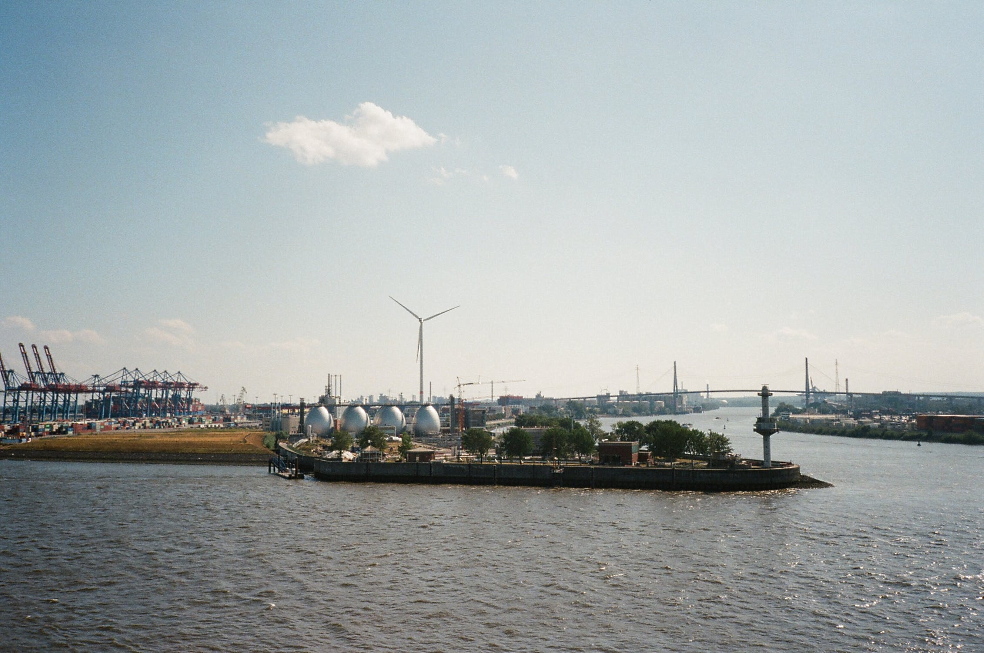
In this case, devices using new technologies are installed, or the original equipment is replaced with identical, but completely new components.
Some components of existing wind turbines (such as an electric generator) are being upgraded or replaced with new ones.
The overall layout of the wind farm, including tower height, location of wind turbines and their characteristics, remains unchanged.
The service life is extended if economic considerations and the margin of safety of the design of the individual components of the turbine allow it.
| Change of physical and operational parameters of wind turbines | Scale of modernization of a wind turbine | Changing the location of wind turbines | |
| Complete modernization | Changing the size and power of the turbine. | New turbines | Same or new location |
| Partial modernization | It is possible to change the rotor diameter and / or turbine power to the extent permitted by environmental and urban standards. | Deep modernization, including the replacement of the main components of the turbine while maintaining the existing foundation and tower. | No change in turbine location |
| Extension of service life | The physical parameters and power of the turbine remain unchanged. | No change - replacement or repair of individual components / modernization of control systems. | No change in turbine location |
Upgrade or dismantle?
An alternative to the aforementioned activities is the complete dismantling of the wind farm, followed by construction at a new location.In this case, wind turbines and infrastructure are disassembled, and the cleared land is returned to agricultural or other use.
Until now, it was believed that wind farm equipment could operate efficiently for 20 years. New wind power plants in Europe typically use modern technology that has already been tried and tested.
Based on the experience and research conducted by manufacturers of wind turbines, the life of most units can be extended to 30 years or more.
However, the issue of modernization applies not only to the technical part.
This is an economic issue.
Decisions to dismantle wind farms should be made taking into account such indicators as the cost of modernization, the costs of operation and repair, the cost of electricity, rent, real estate tax, etc.
In accordance with European law, the owner of the property on which the wind farm is located has the right to receive his land and other property back in good condition after the expiration of the contract.
The investor is obliged to include the following items in the wind farm business plan:
• The costs of dismantling after the end of the operation of wind generators, allowing to restore the leased land to its original condition.
• The plan for the processing and reuse of materials obtained from the dismantling of wind farm equipment by selling them to waste recycling companies.

Modernization or extension of service life?
These are strategic business decisions that must be made long before the end of the life of the wind farm.
Against the background of the rapid development of technologies, it may be economically justified to carry out modernization at the relatively early stages of the emergence of new technologies, long before the mass introduction of a particular technology.
In the case of a complete modernization of the wind power plant, a long and laborious process of designing and seeking financing is required, as is the case with the new project.
The key element that will influence the investor’s decisions on the complete or partial re-equipment of the wind farm is the availability of a project support system after re-equipment or modernization.
Achieving investor goals (extending the service life and increasing the efficiency of the wind farm with minimal costs) requires the participation of engineering professionals.
Engineers must carefully collect and analyze the initial data, check the technical condition of the machines and their foundations, conduct a comparative analysis of various modernization options. Based on these data, we will offer the best technical solutions for individual components and for the whole system.
Legal aspects of the wind farm modernization
Each country has different requirements for wind energy projects.In some countries, the modernization of wind farms is limited by national law.
In particular, the law may prohibit the replacement of wind generators with more powerful or noisy machines. Size restrictions for turbines are also imposed for environmental or even tourism reasons.
During the planning of modernization, the lawyers of our company analyze local requirements, taking into account the minimum distance from residential buildings, mixed-use developments, natural sites and tourist attractions.

At the request of the client, we are negotiating with the authorities and local communities to obtain permission to install equipment with a higher noise level or visual impact.
| Building codes | Environment protection | Urban planning | Certification | |
| Complete modernization | New building permit must be obtained | New environmental impact assessment procedure based on previously collected data | Changes to the local development plan, taking into account the new size, capacity and location of the turbines | Certificate provided by the manufacturer of the new turbine |
| Partial modernization | In the event of a significant change in rotor diameter, the consent of the authorities may be required. | Activities to the extent permitted by the initial decision on environmental conditions | Activities to the extent permitted by the applicable local urban development plan | Changing the diameter of the rotor or the parameters of the main components requires re-certification of the turbine or construction project, confirming compliance with current standards |
| Extension of service life | Activities based on an initial building permit | No changes requiring a re-assessment of the environmental impact of the project | No changes requiring new approval from urban planning authorities | Reliability of structures is ensured in accordance with building codes and safety standards for industrial plants. |
Regardless of the scale of the energy project, only strict adherence to legal requirements can guarantee the security of customer investments.
Consultation with the local community
Consultations are an important process in terms of planning any investments in renewable energy, including wind farm modernization projects.As a rule, these are long-term projects that are deeply integrated into the life of individual communities and require thorough legal and social work.
The legislation of most countries of the modern world requires a dialogue with the public before implementing any major projects that directly or indirectly affect the interests of people.
The engineering company, which is responsible for the modernization of the wind power plant, should be guided by acts on local self-government, laws on urban planning and environmental protection, as well as laws on renewable energy sources, etc.
Some changes during modernization can be quite significant, therefore, the participation of local communities in the discussion is required.
Their opinion can be a decisive factor for the project.
Despite the more than 30-year history of renewable energy in Europe, wind farms are still new to the developing countries and cause different reactions of local communities. Combined with fear and ignorance, this can cause conflict.
That is why it is very important for investors and local authorities to conduct a public consultation process responsibly and openly. It is important to communicate with people so that all participants in the process feel sufficiently informed.
In general, wind farms are the second most acceptable source of renewable energy for the public after solar photovoltaic power plants. This is evidenced by the results of regularly conducted Eurobarometer surveys.
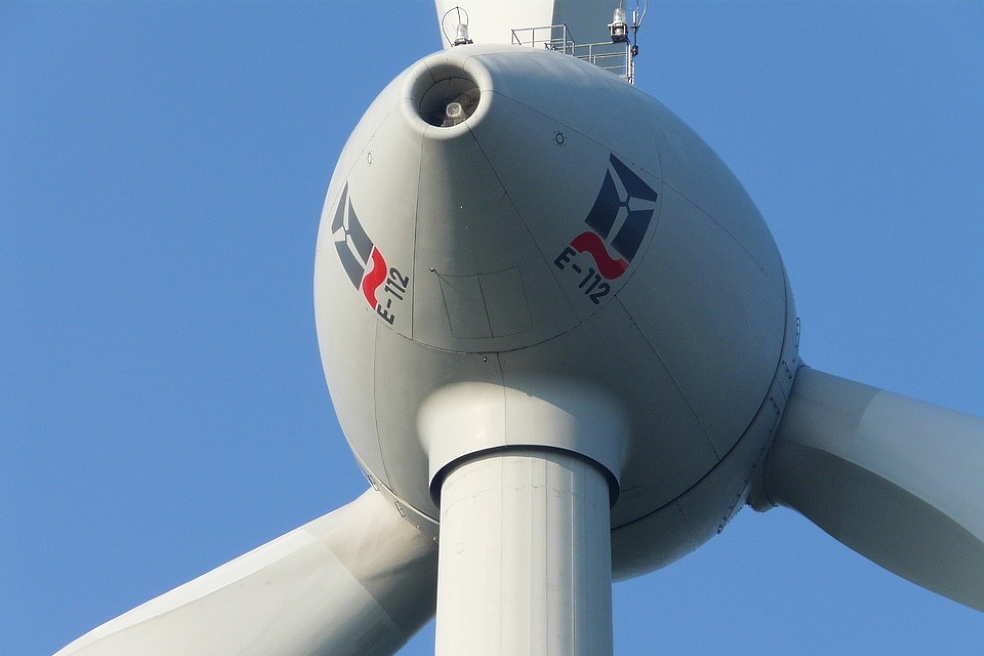
Costex Corporation DBA offers its services for the financing and modernization of wind power plants and their components.
Contact us for more information about our services.
Innovations in wind energy: opportunities for modernization
Research in this area is aimed at improving the efficiency of equipment, including the improvement of a mechanical transmission, generator and rotor.These measures are necessary to reduce costs, as well as to increase the durability and reliability of components.
research institutes are among the European leaders in the development of experimental land and offshore wind farms. Our company cooperates with large universities that have multidisciplinary research teams, laboratories, test benches and special equipment.
The main directions for the modernization of wind power plants include the following.
Gearbox modernization
Today, there is a tendency to increase the reliability of gearboxes due to improved structure and wear resistance of mechanical components. Experts also talk about such important trends as the introduction of hydraulic transmissions.On the other hand, O&M practice is gradually improving as preventative maintenance and remote monitoring of components develop.
Rotor upgrade
Improvements to rotor design include sectional blades, durable carbon fiber and nanotube materials, independent pitch control for each blade, innovative blade designs (variable geometry), and multi-sectional blades.The main development trend of wind turbine rotors is a gradual increase in diameter. This contributes to an increase in turbine power and makes it possible to produce energy in areas with low winds.
As the number of blades increases, independent control of the pitch of the blades will be required to optimize loads, reduce fatigue, and reduce material use and overall equipment weight.
In the process of modernization, blades made of new high-strength and lightweight materials are widely used. This significantly improves the technical characteristics of wind turbines and increases the safety of operation.
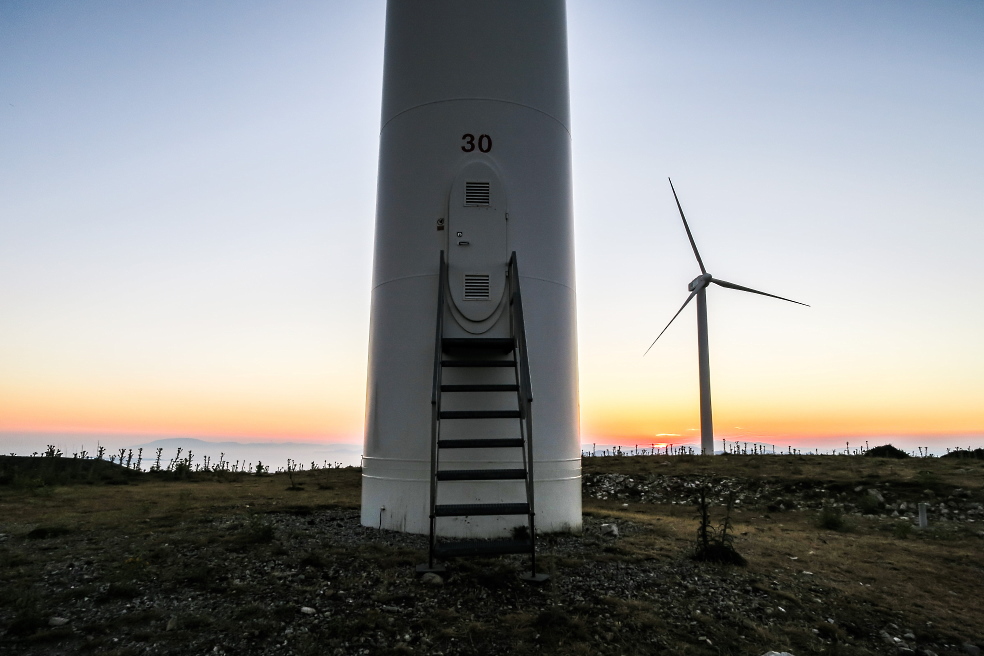
An increase in the size of the blades will create a number of technological problems that can be solved by introducing more complex multisection blades. In the future, our engineers are predicting such important changes as the mass production of variable geometry blades.
Modernization of the generator
In this area, DFIG (Doubly-fed electric machine) technology as well as innovative superconducting materials are noteworthy.In recent years, Spain has been developing new methods to improve the assembly of generators in order to optimize mechanical characteristics and reliability.
Stealth paints and coatings
New paints and coatings are being developed to limit the impact of wind turbines on radars and telecommunication systems.scientists are actively collaborating with telecommunications and military agencies to improve the coverage of wind turbines.
The growth of the wind energy sector is accompanied by studies to limit its impact on other activities. A serious problem is the effect of wind turbines on military radars and telecommunications, which can be solved by introducing advanced stealth technologies.
One of the European research priorities is the development of new rotors that reduce the cost of wind energy by increasing electricity generation, better managing material fatigue and limiting acoustic emissions.
Restarting an offshore wind farm without an external power supply
To date, offshore wind farms have needed the support of traditional thermal or hydraulic power plants to restart and restore the electrical system after a shutdown. With the increase in the number of renewable power plants, such as wind or solar, along with a decrease in the number of conventional power plants, there was a need for an autonomous restart of the wind farms.In addition, the new operating procedures prepared by ENTSO-E (European Network of Electricity Transmission System Operators) contain this requirement, which should be included by the system operators of each country.
Fetech Center, which employs scientists researchers from Jaume I University and the Polytechnic University of Valencia (Spain), has developed technology for restarting offshore wind power plant without any support from an external power grid.
The technology is applicable if the wind farm is connected to the shore electrical network via a high voltage direct current (HVDC) line or a communication line with multi-level modular converters (MMC), which convert alternating current to direct current.
Today, in order for the wind farm to start supplying energy after a shutdown, it is necessary to pre-charge the capacitors of the MMC converters and supply power to the DC line using the shore grid.
However, in the event of a power outage in the shore grid, it is not possible to turn on the MMC and the HVDC. This prevents the wind farm from connecting and thereby reduces the number of power plants that can restart without external support.
To date, several procedures have been proposed for charging capacitors, but in all cases an external energy source is required. As a rule, this source is the shore grid itself. The technology proposed by engineers is based on the use of energy of the offshore wind farm itself.
The introduction of this technology will require the development of special control tools for converters and their testing in a pilot installation or by computer simulation.
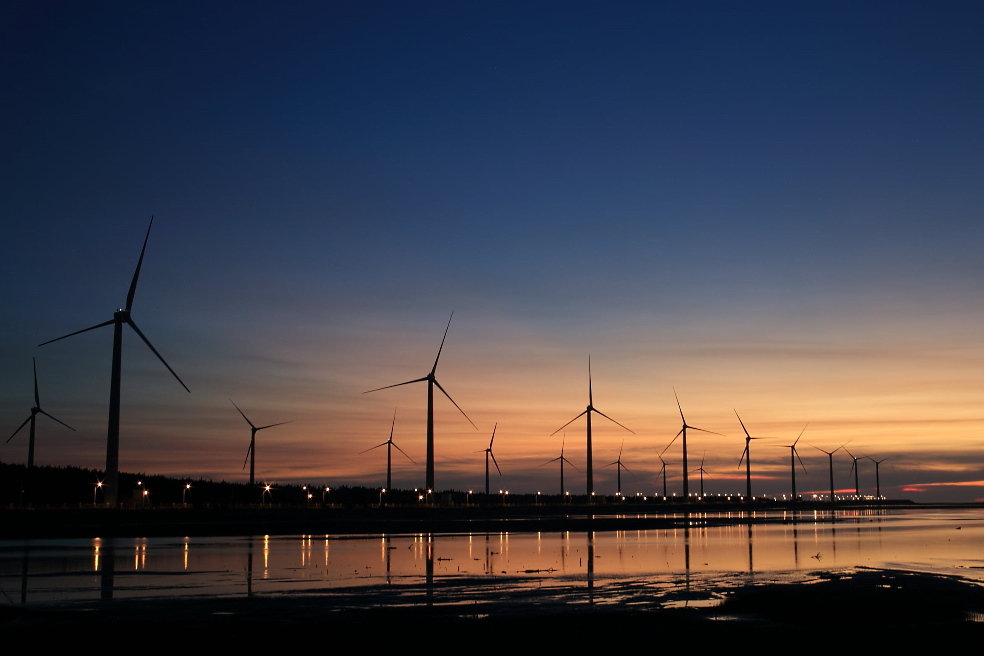
The research team has already thoroughly tested the basic elements of restart technology with promising results. This technology can soon be used in a modernization program for existing offshore wind farms in Europe.
3D printing for the tallest wind turbines in the world
researchers in collaboration with their French and American colleagues are developing a special technology for building foundations and towers for wind turbines using 3D printing. This technology will build towers up to 200 m high.Currently, work is underway to create the optimal building material for 3D printing, which can withstand tremendous mechanical stress.
Various tower design options are also being developed.
In the near future they will present a product that is as close as possible to the needs of customers. It will feature high mechanical parameters, while maintaining ease of use and full compatibility with robotic technologies.
A typical 5 MW wind turbine at 80 meters is capable of generating about 15 GWh per year.
Thanks to the use of a new solution, the same turbine raised to 160 meters will be able to generate 20 Gwh.
This increases the production of renewable electric energy by about 33%.
Among the advantages of the new 3D system is the reduction of production costs and construction time. The technology allows you to print the base of the required height directly in the place where the wind turbine will be located.
From an environmental perspective, these high-altitude wind turbines will accelerate access to renewable energy around the world, increase its production while reducing CO2 emissions.
New 3D printing material is produced using industrial waste, contributing to more sustainable construction. Among the features, the high versatility of the material stands out, since it can be used both for the construction of infrastructure and for the construction of residential buildings.
Modernization is a step into the future
Hundreds of companies, thousands of rationalization proposals and innovative technologies.R&D is changing the face of the wind energy sector every day. Timely modernization of the wind power plant allows your business to keep up to date, gaining economic advantages before others.
The company Costex Corporation DBA is ready to provide you with professional advice and any other services related to the financing and modernization of energy facilities.
We act as your assistant and partner along the entire project implementation process.



